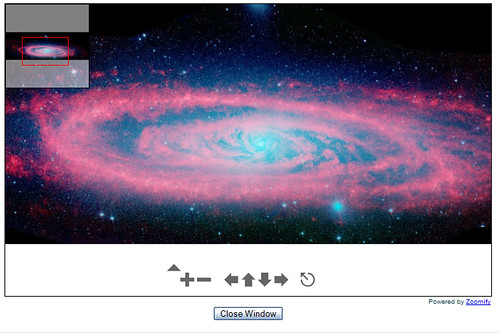Spitzer’s New Look
This is not about my governor.
We’re talking about one of our favorite space instruments, the Spitzer Space Telescope. They’ve got a new feature on their site, one where you can zoom in and pan on some very cool space images.

Be sure the check out some of the animations. I like "Spitzer’s Delicate Ring Flower:"
NASA’s Spitzer Space Telescope finds a delicate flower in the Ring Nebula, as shown in this animation. The outer shell of this planetary nebula looks surprisingly similar to the delicate petals of a camellia blossom. A planetary nebula is a shell of material ejected from a dying star. Located about 2,000 light years from Earth in the constellation Lyra, the Ring Nebula is also known as Messier Object 57 and NGC 6720. It is one of the best examples of a planetary nebula and a favorite target of amateur astronomers.
The "ring" is a thick cylinder of glowing gas and dust around the doomed star. As the star begins to run out of fuel, its core becomes smaller and hotter, boiling off its outer layers.
Spitzer’s infrared array camera detected this material expelled from the withering star. Previous images of the Ring Nebula taken by visible-light telescopes usually showed just the inner glowing loop of gas around the star. The outer regions are especially prominent in this new image because Spitzer sees the infrared light from hydrogen molecules. The molecules emit infrared light because they have absorbed ultraviolet radiation from the star or have been heated by the wind from the star.
NASA called it a celestial valentine.
The candles are lit, the champagne is on ice. All you need now are flowers and a ring. This Valentine’s Day, NASA’s Spitzer and Cassini spacecraft provide you with both, in two engaging new images.
NASA’s Cassini-Huygens mission and Spitzer Space Telescope have captured images of Saturn’s rings and the Ring Nebula, respectively, to bring home spectacular views of two of the most looked-at objects in the sky. The Cassini image shows a detailed color mosaic of Saturn’s shimmering rings. Spitzer imaged the outer shell of the Ring Nebula, which looks surprisingly similar to the delicate petals of a camellia blossom.